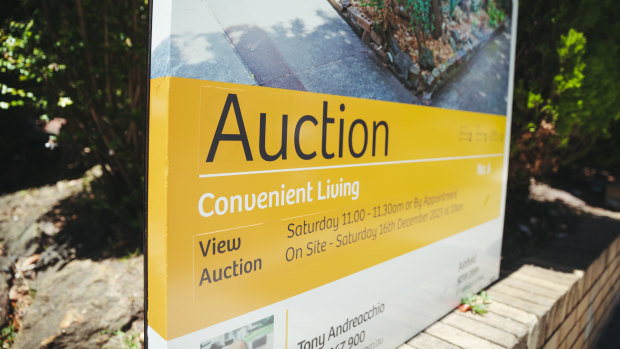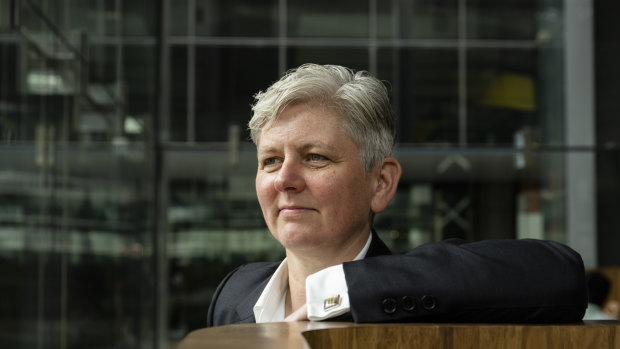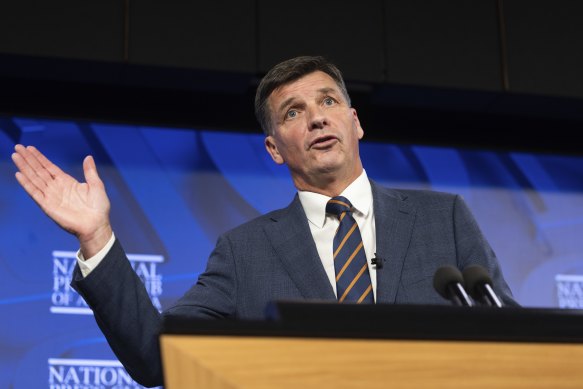By Shane Wright
Home buyers may get an interest rate cut by November and the Albanese government an important boost before a federal election after new figures showed signs of disinflation and deep cuts in spending by the nation’s consumers.
Economists at the nation’s two largest lenders, the Commonwealth and Westpac banks, believe the Reserve Bank could use their second-last meeting of the year, to be held on November 4-5, to slice the official cash rate which has been increased 13 times since March 2022.

Home buyers may get an interest rate cut as early as November after better-than-hoped for inflation figures.Credit: Dion Georgopoulos
The Australian Bureau of Statistics reported on Wednesday morning that headline inflation increased by a full percentage point in the June quarter, taking the annual rate of inflation to 3.8 per cent from 3.6 per cent.
The closely watched underlying measure of inflation rose by 0.8 per cent in the quarter, slightly softer than expected, pulling the annual rate down to 3.9 per cent. It was the sixth consecutive quarterly fall in this measure.
Through the quarter, fruit and vegetable prices rose by 6.3 per cent due to unseasonal weather which affected the nation’s crops of strawberries, blueberries and tomatoes. Meat prices also rose, led by a 6.6 per cent in lamb prices.
Milk and bread prices, which two years ago were growing at a double-digit pace due to the Ukraine war’s impact on global commodity markets, have now fallen back to their slowest pace since the early stages of the pandemic.
The housing sector continues to be the source of most price pressures. Rents climbed by 2 per cent in the quarter to be 7.3 per cent higher over the year. New dwelling costs, which in 2022 were growing at more than 20 per cent, have lifted by 5.1 per cent over the past year.
Electricity prices increased by 2.1 per cent in the quarter to be 6 per cent up over the year. These have been affected by the federal government’s energy bill relief fund.
Without that fund, the bureau estimates electricity prices would have climbed by 14.6 per cent over the past year.
Insurance prices continue to climb, but they are starting to slow down. The annual increase was 16.4 per cent in the year to March but fell to a still high 14 per cent in the year to June.
In more troubling news about the economy, separate retail trade figures showed a 0.5 per cent increase in June as people raced in to local stores to take advantage of end-of-financial year sales.
But the volume of goods sold fell by 0.3 per cent to be 0.6 per cent down over the year. It was the sixth quarterly fall in the past seven quarters.
On a per capita basis, Australians bought $32.80 less in the quarter. Since spending peaked in mid-2022, Australians are spending $256 less per person.
Before the figures were released, financial markets put the chance of an interest rate rise at the Reserve Bank’s board meeting next week at one in four. After the figures, markets showed a small chance of an interest rate cut.

Westpac chief economist Luci Ellis believes the RBA could starting cutting interest rates as early as November.Credit: Janie Barrett
Westpac chief economist and former RBA assistant governor Luci Ellis said the inflation figures, plus broader economic signs such as retail trade and the jobs market, all suggested the Reserve Bank did not have to lift interest rates any higher.
A series of gradual rate cuts, starting in November, was now likely.
“Another quarter of inflation data should be enough to convince the RBA board that disinflation is on track and that inflation will be back into the target range on the desired timetable. That would lead the board to the conclusion that monetary policy does not need to be as tight as it currently is for much longer,” she said.
But HSBC chief economist Paul Bloxham cautioned any rate cuts were not likely until next year.
“Today’s number suggests that another rate hike is unlikely, it still suggests that inflation is sticky, elevated and only falling very slowly,” he said.
Treasurer Jim Chalmers said inflation was sticky and stubborn but still well down on what the government had inherited on coming to office.
“When we came to office, inflation had a six in front of it and now it has a three in front of it. We’ve seen those six consecutive quarters of lower underlying inflation, and that’s a really important development as well,” he said.
But shadow treasurer Angus Taylor said the government was to blame for higher prices.

Shadow treasurer Angus Taylor has blamed the government for rising inflation.Credit: Alex Ellinghausen
“Despite causing this mess, this weak government has left it up to the RBA and ordinary Australians to clean it up,” he said.
“Anthony Albanese and Jim Chalmers must stop pointing the finger at others, and finally acknowledge who is responsible for this mess — themselves.”
Cut through the noise of federal politics with news, views and expert analysis. Subscribers can sign up to our weekly Inside Politics newsletter.